#قلم (qalam)
Explore tagged Tumblr posts
Text
i wnat to learn languages but oh my god how do you continue
#like i can read arabic but i dont understand it#i wanna learn russian#but i need to continue learning arabic#sodaramblestoomuch#for some reason the one word that’s been imbedded in my brain from my two years of arabic classes is the word for pen#قلم (qalam)
12 notes
·
View notes
Text


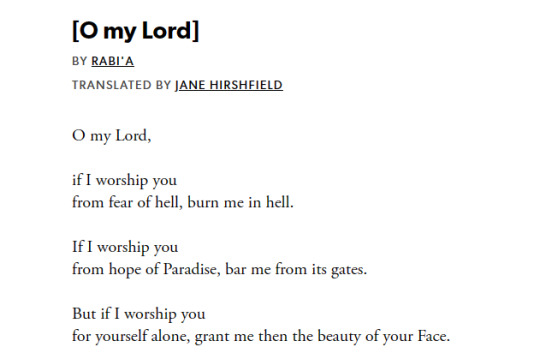
کہانی
رابعہ بصری
سنو تم لکھ کے دے دو نا
کہانی میں کہاں سچ ہے
کہاں پہ رک کے تم نے غالباً کچھ جھوٹ لکھنا ہے
کہاں ایسا کوئی اک موڑ آنا ہے
جہاں چالان ممکن ہے
کہاں وہ بیش قیمت سا
سنہری چھوٹا سا ڈبہ جو اپنی دھڑکنوں سے اپنے ہونے کی گواہی دے رہا ہے
ٹوٹ جانا ہے
کہاں قاری کو سمجھانا ہے
دکھ کے اس الاؤ میں جھلستی سی کہانی روک دینا ہی ضروری ہے
سفر میں رک کے سب کو الوداع کہنے کا لمحہ لازمی ہے
کہاں تاریخ لکھ کے اس قلم کو جیب میں رکھنا ضروری ہو گیا ہے
سنو تم یہ بتاؤ نا
تمہاری طلسماتی سی کہانی میں کوئی کردار تو ہوگا
جو ذمے دار ہوگا
کہاں پر مرکزی کردار نے دکھ درد سینے میں چھپانا ہے
فلک کو بد گماں کر کے
زمیں کو آسماں ہوتا دکھانا ہے
ندامت اور ملامت ساتھ رکھنی ہے
ہر اک ساعت کے سارے دکھ اٹھانے ہیں
نبھانے ہیں
بتانا ہے
محبت زندگی کا استعارہ ہے
محبت رات کا پہلا ستارہ ہے
یا
دکھ کا آخری کوئی کنارہ ہے
رابعہ بصری -
Kahani
Rabia Basri
suno tum likh ke de do na kahani mein kahan sach hai kahan pe ruk ke tum ne ghaaliban kuchh jhuT likhna hai kahan aisa koi ek moD aana hai jahan chaalan mumkin hai kahan wo besh-qimat sa sunahri chhoTa sa Dibba jo apni dhaDkanon se apne hone ki gawahi de raha hai TuT jaana hai kahan qari ko samjhana hai dukh ke is alaw mein jhulasti si kahani rok dena hi zaruri hai safar mein ruk ke sab ko alwidaa kahne ka lamha lazmi hai kahan tariKH likh ke is qalam ko jeb mein rakhna zaruri ho gaya hai suno tum ye batao na tumhaari tilsmati si kahani mein koi kirdar to hoga jo zimmedar hoga kahan par markazi kirdar ne dukh dard sine mein chhupana hai falak ko bad-guman kar ke zamin ko aasman hota dikhana hai nadamat aur malamat sath rakhni hai har ek saat ke sare dukh uThane hain nibhane hain batana hai mohabbat zindagi ka istiara hai mohabbat raat ka pahla sitara hai ya dukh ka aaKHiri koi kinara hai
58 notes
·
View notes
Text
Ishq-e-Rasool (SAW) ❤ - Dr. Allama Muhammad Iqbal
کی محمّدؐ سے وفا تُو نے تو ہم تیرے ہیں یہ جہاں چیز ہے کیا، لوح و قلم تیرے ہیں
Ki Muhammad (S.A.W.) Se Wafa Tu Ne Tau Hum Tere Hain Yeh Jahan Cheez Hai Kya, Loh-o-Qalam Tere Hain
If you are loyal to Muhammad we are yours This universe is nothing the Destiny and the Pen are yours
نگاہِ عشق و مستی میں وہی اوّل، وہی آخر وہی قُرآں، وہی فُرقاں، وہی یٰسیں، وہی طٰہٰ
Nigah-e-Ishq-o-Masti Mein Wohi Awal, Wohi Akhir Wohi Quran, Wohi Furqan, Wohi Yasin, Wohi Taha
In the gaze of love and ecstasy,He (SAW) is the beginning,He (SAW) is the end, He (SAW) is the Quran, He (SAW) is the Furqan (Criterion) He (SAW) is Yasin,He (SAW) is Taha.
قُوّتِ عشق سے ہر پست کو بالا کر دے دہر میں اسمِ محمّدؐ سے اُجالا کر دے
Quwwat-e-Ishq Se Har Past Ko Bala Kar De Dehr Mein Ism-e-Muhammad (S.A.W.) Se Ujala Kar De
With the Love’s power elevate every low to elegance With Muhammad’s (SAW) name illuminate the whole world
خوشا وہ وقت کہ یثرب مقام تھا اس کا خوشا وہ دور کہ دیدار عام تھا اس کا
Khosha Woh Waqt Ke Yasrab Maqam Tha Uss Ka Khosha Woh Dour Ke Didar Aam Tha Uss Ka
How wonderful was the time when Yathrib was his (SAW) abode, How beautiful was the era when his (SAW) sight was available to all.
سالارِ کارواں ہے میرِ حجازؐ اپنا اس نام سے ہے باقی آرامِ جاں ہمارا
Salar-e-Karwan Hai Meer-e-Hijaz (S.A.W.) Apna Iss Naam Se Hai Baqi Aram-e-Jaan Humara
The Lord of Hijaz is the leader of our community; From this name comes the peace of our soul.
لَوح بھی تُو، قلم بھی تُو، تیرا وجود الکتاب گُنبدِ آبگینہ رنگ تیرے محیط میں حباب
Loh Bhi Tu Qalam Bhi Tu, Tera Wajood Al-Kitab Gunbad-e-Abgina Rang tere Muheet Mein Habab
You are the Sacred Tablet, You are the Pen and the Book; This blue‐colored dome is a bubble in the sea that you are.
ہو نہ یہ پھُول تو بُلبل کا ترنُّم بھی نہ ہو چَمنِ دہر میں کلیوں کا تبسّم بھی نہ ہو
Ho Na Ye Phool To Bulbul Ka Tarannum Bhi Na Ho Chaman-e-Dehr Mein Kaliyon Ka Tabassum Bhi Na Ho
If this fair flower blossom not, The nightingale will not sing, In the garden of world, theflower-buds wouldn't beam with joy.
یہ نہ ساقی ہو تو پھرمے بھی نہ ہو، خُم بھی نہ ہو بزمِ توحید بھی دنیا میں نہ ہو، تم بھی نہ ہو
Ye Na Saqi Ho To Phir Mai Bhi Na Ho, Khum Bhi Na Ho Bazm-e-Touheed Bhi Dunya Mein Na Ho, Tum Bhi Na Ho
If he (SAW) were not the Saki, then there would be no wine, nor the Jar. Nor in this world will tawhid shine, Nor you (Muslims) exist
خیمہ افلاک کا اِستادہ اسی نام سے ہے نبضِ ہستی تپش آمادہ اسی نام سے ہے
Khema Aflak Ka Istada Issi Naam Se Hai Nabz-e-Hasti Tapish Aamadah Issi Naam Se Hai
The tent of the skies stands firm by this very name. The pulse of existence, is warm by this very name.
~ Dr. Allama Iqbal Voice: Zia Mohyeddin
3 notes
·
View notes
Text
آج موسم نے عجب رُت بدلی۔ رات میں پڑتی شدت کی سردی صبح چلچلاتی دھوپ میں بدل گئی۔ دسمبر کے اس بے ترتیب دن کو سوچتے یادوں کے پردوں میں کہیں تم سرسرائے۔
میرا روانی سے چلتا قلم دھیرے سے کپکپایا پر پھر سے چل پڑا۔ میرے کاجل کی لکیر بھیگی پر سنبھل گئی۔ دھوپ تھی، شام ڈھلی تو گزر گئی۔ تپش کو دُھند کھا گئی پر یاد کے پردوں سے تم کئی دن تک نہ جا سکے۔
س ی ط

Aj mausam ne ajab rutt badli. Raat mai parti shiddat ki sardi subha chilchilaati dhoop mai badal gayi. December k is be-tarteeb din ko sochtay yaadon k pardon mai kahin tum sarsaraye.
Mera rawani se chalta qalam dheeray se kapkapaya, pr phir se chl para. Mere kajal ki lakeer bheegi, pr phir sambhal gayi. Dhoop thi, shaam dhali to guzar gyi. Tapish ko dhund khaa gyi par yaad k pardon se tum kayi din tak na ja sakay.
-SYT
#sometimes i write#tum yaad aye#desi tumblr#just desi things#desi larki#life of a desi girl#urdu aesthetic#pakistan#urdu stuff#pakistani aesthetics#desi culture#urdu quote#urdupoetry#urdu literature#urduadab#mohabbat#pyar#ishq#zindagi#desi people#desi life#desi literature#desi post#desiblr#desi writers#desi aesthetic#being desi#desi core#desi community#syt
4 notes
·
View notes
Text
Understanding Arabic Possessive Pronouns: A Simple Guide
Arabic is a beautiful and intricate language, and one of the key components in understanding it is mastering its possessive pronouns. These are words used to show ownership, like saying "my book" or "your car" in English. However, Arabic possessive pronouns work a little differently, and getting the hang of them can make your Arabic sound more natural and fluent.
First, let’s break down how Arabic possessive pronouns function. In Arabic, possession is usually indicated by adding a suffix to the noun, meaning the pronoun (like "my," "your," or "his") is attached directly to the word it modifies. This is different from English, where possessive pronouns are separate words that go before the noun.
In Arabic, these possessive pronouns change based on the gender and number of the noun, as well as the person who owns it. This means there are different forms for masculine and feminine words, and they also change when talking about one person (singular), a group of people (plural), or showing respect to someone (formal).
The Basics of Possessive Pronouns in Arabic
Let’s go through some examples to give you a clearer idea of how they work:
My – “ي” (pronounced "i") is added to the end of a noun to indicate "my." For example, “كِتابي” (kitabi) means "my book."
Your (masculine singular) – “كَ” (pronounced "ka") is used for masculine singular nouns. For example, “كِتابكَ” (kitabuka) means "your book" (talking to a male).
Your (feminine singular) – “كِ” (pronounced "ki") is used for feminine singular nouns. For example, “كِتابكِ” (kitabuki) means "your book" (talking to a female).
His – “هُ” (pronounced "hu") is used for masculine nouns. For example, “كِتابهُ” (kitabuhu) means "his book."
Her – “هَا” (pronounced "ha") is used for feminine nouns. For example, “كِتابها” (kitabuha) means "her book."
Our – “نَا” (pronounced "na") is added to the noun to indicate "our." For example, “كِتابنا” (kitabuna) means "our book."
Your (plural) – “كُم” (pronounced "kum") is used when addressing multiple people. For example, “كِتابكم” (kitabukum) means "your book" (addressing more than one person).
Their – “هُم” (pronounced "hum") is used for masculine plural nouns. For example, “كِتابهم” (kitabhum) means "their book."
Their (feminine plural) – “هُنَّ” (pronounced "hunna") is used for feminine plural nouns. For example, “كِتابهنَّ” (kitabhunna) means "their book" (talking about a group of females).
Now, you might be wondering how this looks in practice. Let’s take a look at an example sentence with a possessive pronoun:
Arabic possessive pronouns play an essential role in helping us express ownership. Consider the sentence: "This is my house." In Arabic, it would be “هذا بيتي” (hatha bayti), where “بيتي” (bayti) means "my house," formed by adding “ي” (i) to the word "house" (بيت).
Special Considerations with Possessive Pronouns
Something to keep in mind is that possessive pronouns in Arabic are attached directly to the noun, making the sentence structure slightly different from English. For instance, in English, we would say "her pen," but in Arabic, it becomes “قلمها” (qalamha), where “قلم” (qalam) means "pen," and the “ها” (ha) suffix indicates possession.
Another thing to note is that Arabic has both formal and informal ways of addressing people. The plural "your" (كُم) is used when addressing a group of people, while the singular form (كَ, كِ) is used when speaking to one individual.
Gender and Plurals Matter
The possessive pronouns in Arabic change depending on the gender of the noun. For example, "my book" is كِتابي (kitabi) when it refers to a masculine noun (such as "book"), but it would change to كتابتي (kitabati) for a feminine noun like "letter" (رسالة).
Also, possessive pronouns change when we’re referring to more than one person. For example, “our house” is بيتُنا (baytuna), where “نا” (na) signifies "our."
Final Thoughts
Arabic possessive pronouns are key to expressing possession and adding clarity to your conversations. Once you understand the system of suffixes and how they change based on gender, number, and formality, they’ll start to feel much more intuitive. Remember, Arabic possessive pronouns are attached directly to the noun, making them a unique feature of the language.
With practice, you'll get the hang of it and be able to speak about ownership and relationships naturally. So, don’t hesitate to start using these possessive pronouns in your daily Arabic conversations.
0 notes
Text
Understanding Arabic Broken Plurals: A Key Aspect of the Language
Arabic is a language with a rich and complex structure, one that includes various forms of plurals. One of the most fascinating aspects of Arabic grammar is the broken plural. These plurals don't follow the typical pattern of adding a suffix, but instead undergo internal changes in the root of the word. For learners, understanding broken plurals can be both intriguing and challenging.
What Are Broken Plurals?
In Arabic, a "plural" refers to more than one object, person, or thing. However, unlike in many languages, Arabic has two main ways of forming plurals: regular (sound) plurals and broken plurals. A regular plural is simply formed by adding a suffix, such as "ات" (aat) for feminine words. On the other hand, broken plurals involve changes within the structure of the word itself. These changes typically involve alterations to the root letters of the singular noun.
A broken plural in Arabic is created by modifying the vowels or sometimes even the consonants of the root word, leading to a different word form. These changes can vary significantly depending on the word, and this is what makes broken plurals unique and somewhat tricky to learn for non-native speakers.
The Structure of Broken Plurals
To understand broken plurals, it's important to first grasp the structure of a regular Arabic word. Arabic words are built around a three-letter root, which holds the core meaning of the word. For example, the root "كتاب" (k-t-b) means "writing" or "book." When forming a plural, the letters in this root can be rearranged or altered to form a different word with a plural meaning.
For example:
كتاب (kitaab) means "book."
The broken plural form would be كتب (kutub), which means "books."
Here, you can see that the root letters "k-t-b" are rearranged to form a plural, making it a broken plural. This is quite different from the regular plural formation, where you would simply add a suffix like "aat."
Why Are Broken Plurals Important?
Broken plurals play a critical role in the Arabic language. Not only are they essential for proper grammar, but they also help convey meaning and nuance. Mastering broken plurals is essential for fluency because they appear in both formal and informal Arabic, as well as in various dialects.
For example, the word "مكتبة" (maktaba) means "library." Its broken plural form is "مكتبات" (maktabaat), which means "libraries." As you can see, even though "مكتبة" follows a regular pattern for pluralization, its broken plural form differs slightly in structure from that of other regular plurals.
Key Patterns in Broken Plurals
While there is no one-size-fits-all rule for creating broken plurals, several patterns have emerged over time. Some of these patterns apply to specific types of nouns, such as objects, animals, or people. Here are a few common examples of these patterns:
The "fa'ala" Pattern: Many broken plurals are formed from the pattern "fa'ala," where the root letters change to form a new word. For example:
كتاب (kitaab) → كتب (kutub)
جمل (jamal) → جمال (jamaal)
The "fool" Pattern: Another common pattern for broken plurals involves altering the root in a specific way. This often leads to words with a more descriptive or specific plural meaning. For example:
رجل (rajul) → رجال (rijaal)
The "fā'ila" Pattern: This is often used for nouns that refer to specific characteristics, often leading to a plural form that changes the structure of the root word. For example:
قلم (qalam) → أقلام (aqlaam)
شجرة (shajara) → أشجار (ashjaar)
The "fa'il" Pattern: For words describing professions or roles, this pattern can apply. For example:
معلم (mu'allim) → معلمون (mu'allimoon)
طبيب (tabeeb) → أطباء (atibaa')
Common Challenges and Tips
One of the biggest challenges when learning broken plurals is that there is no consistent rule that applies to all nouns. This means that memorization is often required, and language learners must familiarize themselves with the different forms and patterns.
A helpful tip is to try and learn groups of nouns that share the same plural pattern. This way, you’ll start recognizing similar words and their plural forms, making it easier to remember.
Additionally, it's important to be aware of Arabic broken plurals because they frequently appear in both everyday conversations and formal texts. For example, if you're reading a book or watching a news report, you'll likely encounter these types of plurals frequently.
Conclusion
Arabic broken plurals are a fascinating and important aspect of the language. Although they might seem complex at first, with practice, they become easier to understand. By recognizing the various patterns and learning them step-by-step, anyone can improve their understanding of the language. Arabic broken plurals are an essential part of fluency, and mastering them can help learners sound more like native speakers while reading and speaking Arabic with ease.
0 notes
Text
سلام - مسجد - كتاب - قلم - حرم جامعي - سندويشة
salaam, masjid, kitab, qalam, haram jami'i, sandwisheh fuck you biden does my language scare u bitch ass racist
i should start throwing random arabic words in my posts just to annoy any racists out there. ✨fuck yall✨
bateekh 🍉🍉🍉 بطيخ
Who cares what Biden says. He's a racist who thinks Arabic words are antisemitic by nature. Intifada.
#peace mosque book pen university campus and sandwhich respectively ... and watermelon in case it wasnt obvious lol#fuck joe biden#i will terrorise you with arabic words#ya haywan#ya hmar#ya kalb#*throws slipper*#*curses your ancestors*#palestine#free palestine#free gaza#gaza#fuck israel#🍉🍉🍉#from the river to the sea palestine will be free
3K notes
·
View notes
Text
פושטקוה שמיל
פושטקוה שמיל (פרסית: پشتکوه شمیل) היא אזור גיאוגרפי ומקום תיירותי בכפר שמיל, מחוז שמיל, מחוז בנדר עבאס, מחוז הורמוזגן, איראן. זהו חלק נפרד של מחוז שמיל השוכן מצפון להר ניאן ולכפר שמיל, מערב לכפר רודכאנה, דרום לכפר סיהאהו ומזרח לכפרי חורגו וסרכון.
האזור כולל את הכפרים הבאים:
קוה להרו (کوه رهرو)
קוה דזאן (کوه دازان)
סולובלם (سلوبلم)
גרדנה-יה פושטקוה (گردنه پشتکوه )
קלאם, איראן قلم (بندرعباس)
סיכוראן (سیخوران )
זנהי (زنهی )
קונאר סיאה (کنار سیاه )
גאג'ג'ה פושטקוה (گجگ پشتکوه )
טומב באריקו (تنب باریکو )
:הפניות
^ "گروه رسانهای صبحساحل". گروه رسانهای صبحساحل (in Persian). 2021-03-28. Retrieved 2024-03-05.
^ "پشتکوه ۲۰ سال در انتظار اتصال به شبکه برق هرمزگان است/ وضعیت خطرناک سیمکشی از ترانس به منازل". www.iscanews.ir (in Persian). 2023-07-17. Retrieved 2024-03-05.
^ "طبیعت روستای پشتکوه شمیل هرمزگان". نماوید (in Persian). Retrieved 2024-03-05.
^ طبیعت زیبای روستای پشتکوه شمیل هرمزگان, retrieved 2024-03-05
^ "آپارات - سرویس اشتراک ویدیو". آپارات - سرویس اشتراک ویدیو (in Persian). Retrieved 2024-03-05.
^ "آپارات - سرویس اشتراک ویدیو". آپارات - سرویس اشتراک ویدیو (in Persian). Retrieved 2024-03-05.
^ "آپارات - سرویس اشتراک ویدیو". آپارات - سرویس اشتراک ویدیو (in Persian). Retrieved 2024-03-05.
^ "آپارات - سرویس اشتراک ویدیو". آپارات - سرویس اشتراک ویدیو (in Persian). Retrieved 2024-03-05.
^ Jump up to:a b c d e f g h i "Census of the Islamic Republic of Iran, 1385(2006)" (Excel). Statistical Center of Iran. Archived from the original on 2011-09-20.
^ Kuh Lahru can be found at GEOnet Names Server, at this link, by opening the Advanced Search box, entering "-3754739" in the "Unique Feature Id" form, and clicking on "Search Database".
^ "KUH LAHRU Geography Population Map cities coordinates location - Tageo.com". www.tageo.com.
^ Kuh Dazan can be found at GEOnet Names Server, at this link, by opening the Advanced Search box, entering "-3754737" in the "Unique Feature Id" form, and clicking on "Search Database".
^ "KUH DAZAN Geography Population Map cities coordinates location - Tageo.com". www.tageo.com.
^ Solubalm can be found at GEOnet Names Server, at this link, by opening the Advanced Search box, entering "-3754737" in the "Unique Feature Id" form, and clicking on "Search Database".
^ Gardaneh-ye Poshtkuh can be found at GEOnet Names Server, at this link, by opening the Advanced Search box, entering "-3082089" in the "Unique Feature Id" form, and clicking on "Search Database".
^ "روستای گردنه پشتکوه بندرعباس اطلاعات گردشگری – آدرس مپ". addressmap.ir. February 9, 1402.
^ Qalam can be found at GEOnet Names Server, at this link, by opening the Advanced Search box, entering "-3068752" in the "Unique Feature Id" form, and clicking on "Search Database".
^ "Sikhuran village ، Bandar Abbas". safarzon.com.
^ Zanhi can be found at GEOnet Names Server, at this link, by opening the Advanced Search box, entering "-3088974" in the "Unique Feature Id" form, and clicking on "Search Database".
^ "Zanhi Map, Weather and Photos – Iran: populated place – Lat:27.6311 and Long:56.7711". www.getamap.net.
^ توریستی, چهارگوشه-معرفی استان ها و شهر های ایران و جاذبه های. "کنارسیاه (بندرعباس)". چهارگوشه – معرفی استان ها و شهر های ایران و جاذبه های توریستی.
^ Gajg-e Poshtkuh can be found at GEOnet Names Server, at this link, by opening the Advanced Search box, entering "-3063248" in the "Unique Feature Id" form, and clicking on "Search Database".
^ "GeoHack - Tonb Bariku".
^ ایران, اتو اطلس (2016). اتو اطلس ایران [Auto Atlas of Iran] (in Persian) (1 ed.). Tehran, iran: موسسه جغرافیایی و کارتوگرافی گیتاشناسی. ISBN 978-964-342-435-0.
^ استان هرمزگان, مجموعه راهنمای جامع ایرانگردی : استان هرمزگان (1999). مجموعه راهنمای جامع ایرانگردی: استان هرمزگان [Comprehensive guidebook for Iran travel: Hormozgan province] (in Persian) (1 ed.). Tehran, iran: موسسه تحقیقات و انتشارات کاروان جهانگردان. ISBN 978-964-6635-13-5.
^ استان های ایران, اطلس گیتاشناسی (2005). اطلس گیتاشناسی استانهای ایران [Atlas of Geology of Iranian Provinces] (in Persian) (3 ed.). Tehran, iran: موسسه جغرافیایی و کارتوگرافی گیتاشناسی. ISBN 978-964-342-165-6.
^ "جذب و تربیت کودکان محور فعالیتهای کانون مسجد انصارالحجه شمیل/آرزوی بچههای مسجد رفتن به اردوی مشهد است". شبستان (in Persian). 2019-10-07. Retrieved 2024-03-06.
^ "آپارات - سرویس اشتراک ویدیو". آپارات - سرویس اشتراک ویدیو (in Persian). Retrieved 2024-03-06.
^ YJC, خبرگزاری باشگاه خبرنگاران | آخرین اخبار ایران و جهان | (2023-03-25). "دشت شَمیل؛ ناشناخته دیار آب و آفتاب". fa (in Persian). Retrieved 2024-03-06.
^ nhn1 (2021-05-30). "آتش سوزی برخی از نخلستان های بخش شمیل". روزنامه ندای هرمزگان (in Persian). Retrieved 2024-03-06.
^ "طبیعت روستای پشتکوه شمیل هرمزگان". نماوید (in Persian). Retrieved 2024-03-06.
^ "آپارات - سرویس اشتراک ویدیو". آپارات - سرویس اشتراک ویدیو (in Persian). Retrieved 2024-03-06.
^ "مهجور ماندن منطقه ای بکر در هرمزگان/شمیل به جای پیشرفت پسرفت کرده است!". dana.ir (in Persian). Retrieved 2024-03-06.
^ "تابش خورشید مطهر رضوی در بخش شمیل". صاحبخبر (in Persian). 2022-06-10. Retrieved 2024-03-06.
^ "آپارات - سرویس اشتراک ویدیو". آپارات - سرویس اشتراک ویدیو (in Persian). Retrieved 2024-03-06.
^ "گروه رسانهای صبحساحل". گروه رسانهای صبحساحل (in Persian). 2022-01-12. Retrieved 2024-03-06.
^ "آپارات - سرویس اشتراک ویدیو". آپارات - سرویس اشتراک ویدیو (in Persian). Retrieved 2024-03-06.
^ "شهید باسره، هوای جنگ زده ها را داشت". پایگاه خبری جماران (in Persian). 2024-03-05. Retrieved 2024-03-05.
^ ها, اخبار استان (2022-10-10). "علی باصره" رئیس اتاق اصناف بندرعباس باقی ماند". fa (in Persian). Retrieved 2024-03-05.
^ "آخرین خبر | ویدئو/ هنرمند جوان هرمزگانی درگذشت". آخرین خبر (in Persian). Retrieved 2024-03-05.
^ "«آصف باصره» رئیس شورای سیاستگذاری ائمه جمعه هرمزگان شد". خبرگزاری حوزه. February 13, 2020.
^ "نمایش خبر | کمیته امداد امام خمینی (ره)". emdad.ir. Retrieved 2024-03-05.
^ Jump up to:a b "پشت کوهها روستایی است، جادهای باید ساخت! - ایسنا". www.isna.ir. Retrieved 2024-03-05.
^ "گروه رسانهای صبحساحل". گروه رسانهای صبحساحل (in Persian). 2022-01-12. Retrieved 2024-03-05.
^ شهادت, نوید شاهد | فرهنگ ایثار و (2023-02-02). "سفر یکروزه مدیرکل بنیاد هرمزگان به روستای پشتکوه از توابع بخش شمیل". fa (in Persian). Retrieved 2024-03-05.
^ "آپارات - سرویس اشتراک ویدیو". آپارات - سرویس اشتراک ویدیو (in Persian). Retrieved 2024-03-05.
^ "مشکلات راه روستایی در پشتکوه". ایسنا (in Persian). 2018-04-22. Retrieved 2024-03-05.
^ YJC, خبرگزاری باشگاه خبرنگاران | آخرین اخبار ایران و جهان | (2024-01-13). "تحویل سند مالکیت مسکونی به مردم روستای گردنه پشتکوه بخش شمیل". fa (in Persian). Retrieved 2024-03-05.
^ AGENCY, خبرگزاری صدا و سیما | IRIB NEWS. "اهدای ۷۲ سند ملکی به مردم روستای گردنه پشتکوه بخش شمیل". fa.
^ YJC, خبرگزاری باشگاه خبرنگاران | آخرین اخبار ایران و جهان | (2023-12-07). "آغاز برداشت پرتقال از باغات روستای پشتکوه بخش شمیل بندرعباس+عکس و فیلم". fa (in Persian). Retrieved 2024-03-05.
^ "ایجاد آبزی پروری در روستای پشتکوه هرمزگان به همت بنیاد برکت". setad.ir (in Persian). 2022-06-11. Retrieved 2024-03-05.
^ "گروه رسانهای صبحساحل". گروه رسانهای صبحساحل (in Persian). 2021-03-28. Retrieved 2024-03-05.
^ "پشتکوه ۲۰ سال در انتظار اتصال به شبکه برق هرمزگان است/ وضعیت خطرناک سیمکشی از ترانس به منازل". www.iscanews.ir (in Persian). 2023-07-17. Retrieved 2024-03-05.
^ "طبیعت روستای پشتکوه شمیل هرمزگان". نماوید (in Persian). Retrieved 2024-03-05.
^ طبیعت زیبای روستای پشتکوه شمیل هرمزگان, retrieved 2024-03-05
^ "آپارات - سرویس اشتراک ویدیو". آپارات - سرویس اشتراک ویدیو (in Persian). Retrieved 2024-03-05.
^ "آپارات - سرویس اشتراک ویدیو". آپارات - سرویس اشتراک ویدیو (in Persian). Retrieved 2024-03-05.
^ "آپارات - سرویس اشتراک ویدیو". آپارات - سرویس اشتراک ویدیو (in Persian). Retrieved 2024-03-05.
^ "آپارات - سرویس اشتراک ویدیو". آپارات - سرویس اشتراک ویدیو (in Persian). Retrieved 2024-03-05.
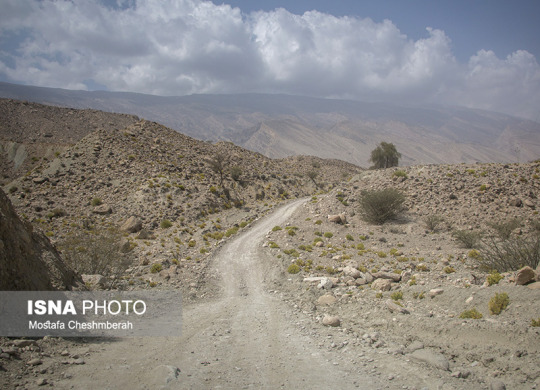
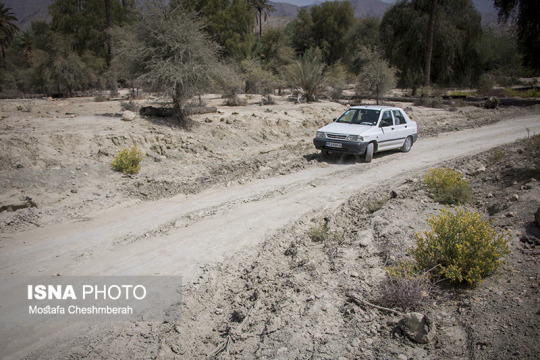
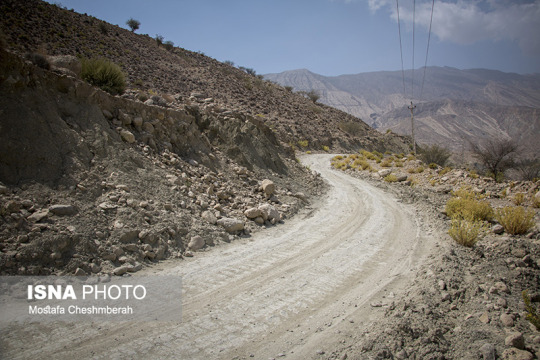
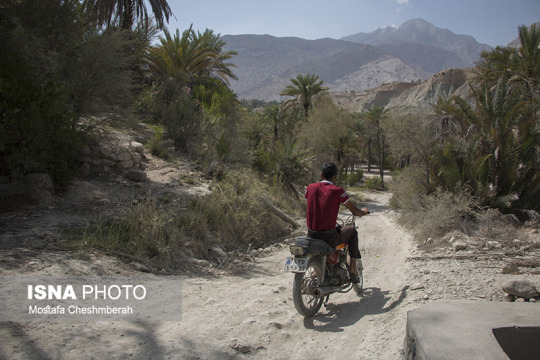
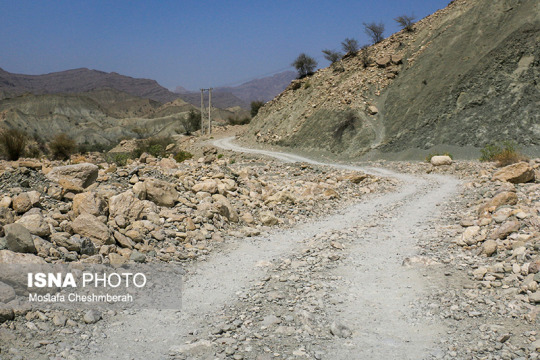


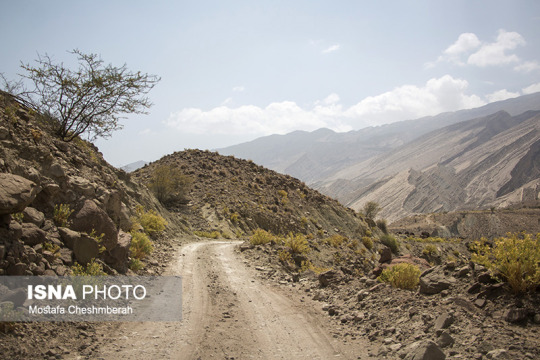
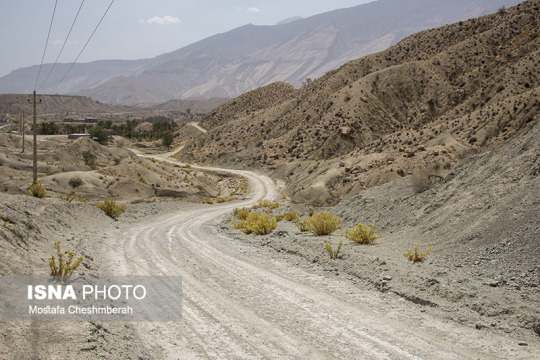

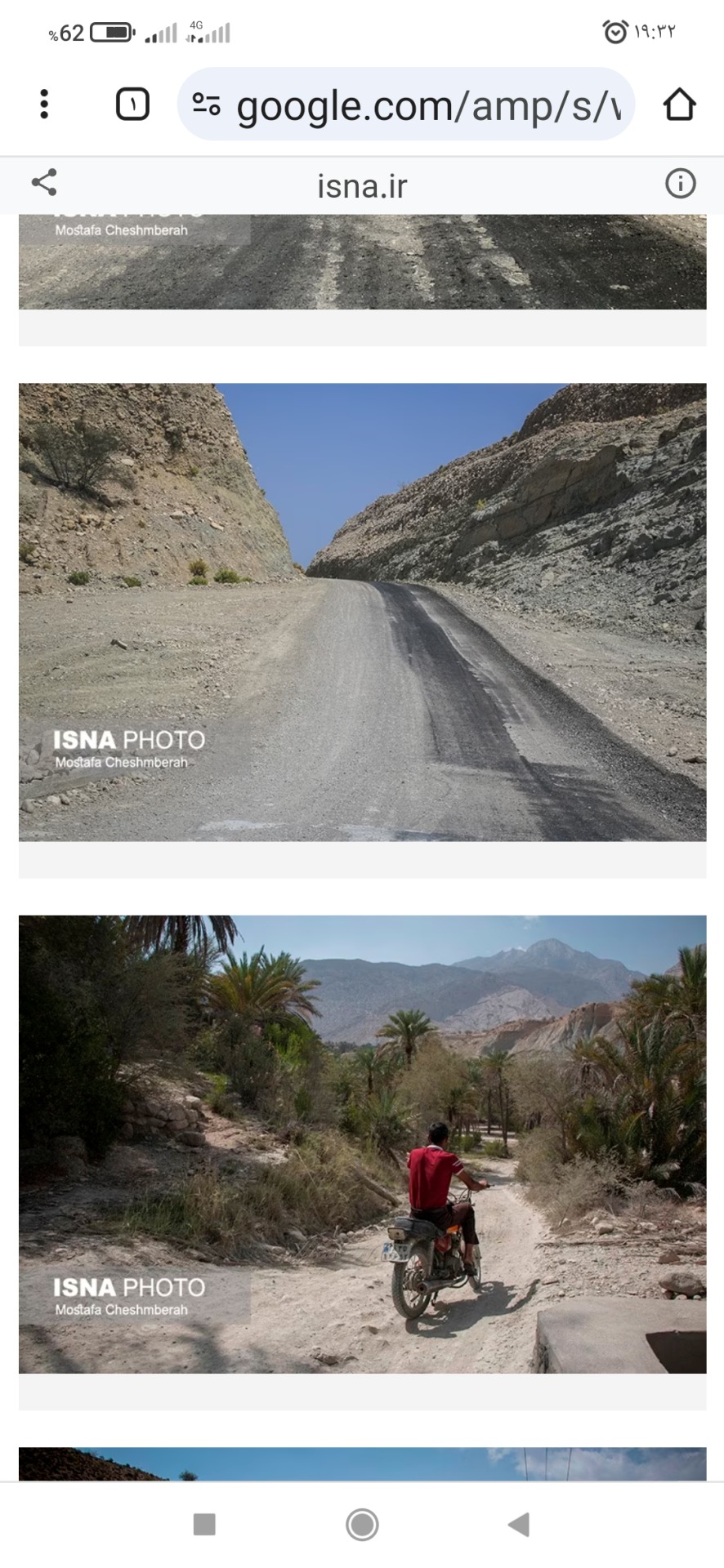
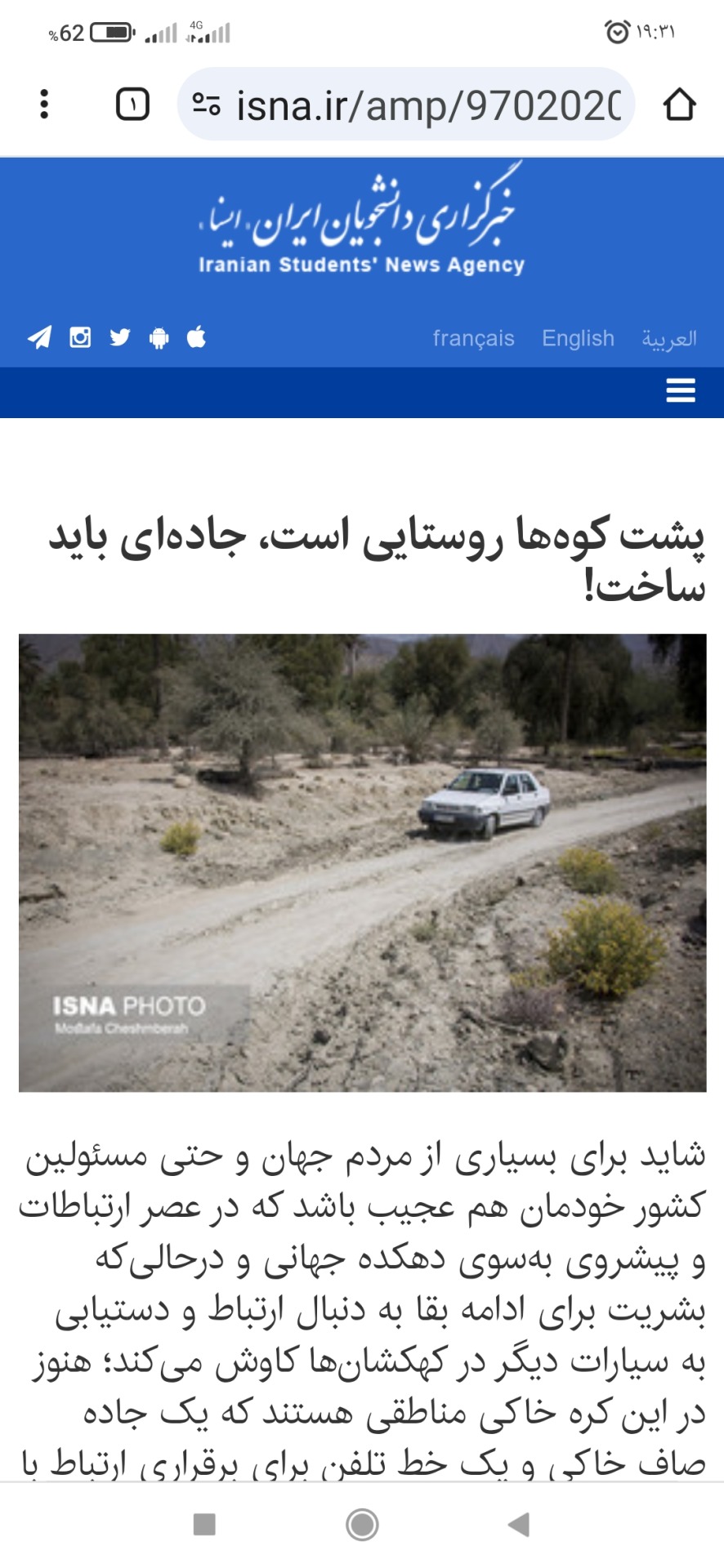
1 note
·
View note
Text
متاعِ لوح و قلم چھن گئی تو کیا غم ہے
کہ خون دل میں ڈبو لی ہیں انگلیاں میں نے
زباں پہ مہر لگی ہے تو کیا کہ رکھ دی ہے
ہر ایک حلقۂ زنجیر میں زباں میں نے
Mataa-e-loh-o-qalam chin gyi to kia gham hai
K khoon-e-dil mein dabo li hain unglian mein ne
Zabaan pay muhar lagi hai to kia rakh di hai
Har ek halka-e-zanjeer mein zabaan mein ne
―Faiz Ahmed Faiz
There is no sorrow even if our assets of 'ink and pen' have been taken away
Because I have dipped my fingers in my blood as of now
So what if they have tried to shut my tongue, I have;
Already put in my voice in the mouths of everybody out there who is linked with me through chains
#literature#urdu#shayari#urdu poems#urdu poetry#poetry#beautiful quote#idk much abt translation but i did what i did#poets on tumblr#urdu shairi#faiz ahmed faiz
37 notes
·
View notes
Text
Ki Muhammad (SAW) Se Wafa Tu Ne To Hum Tery Hein
Yeh Jahaan Chez Hai Kiya Looh o Qalam Hum Tery Hein
کی محمد ﷺ سے وفا تُو نے تو ہم تیرے ہیں
یہ جہاں چیز ہے کیا لوح و قلم تیرے ہیں
• Allama Iqbal
8 notes
·
View notes
Text
تُم کہتے ہو کہ میری آنکھوں میں
کھو دیتے ہو خود کو کئ دفع ،
پھر زمانے کا گلہ بھی اور
کہ یہ روغن چشم قلم سے روح کی عکاسی کرکے
بس تمہارے ہی وجود کی داستانے ثبت کرتی ہیں ~
Tum kehte ho ki meri aankhon mai
Kho dete ko khud ko kayi dafa ,
Phir zamane ka gilla bhi aur
Ki ye roghan chashm qalam se rooh ki akasi krke
Bas tumhare hi wujood ki dastaane sabt Karti hai. ~کامنہ بیگ
4 notes
·
View notes
Note
Hi! I was recently told that learning Fusha is completely useless if you want to learn Arabic to communicate in it. Do you think this is true?
Hi, anon.
I don’t think this is correct, this is why I disagree.
First of all: I’ve always told people that learning MSA is important because it gives you structure, I’ll elaborate on this a little.
Since we know that the dialects are all derived from standard Arabic, in order to learn the “modified”, you need to know the original version so that you can understand it. It’s important to know the point of reference so that you can see how this is modified.
For example قلم can be pronounced as ‘alam, galam, qalam, etc, so if you know that these are all just dialectal differences in the way the letter ق is pronounced, things will be easier for you to learn.
Similarly with لعبة which can be read as Luʿbah or Luʿbeh ; when you hear someone saying Naḍḍāra you’re more likely to know that this means glasses if you know the word نظارة, and this will help you understand the dialect and make some generalizations to help you master it (for example Levantine dialect tends to pronounce ظ as ض in many cases; and they also tend to read the ق as أ ).
This reminded me of Wuthering heights, and Joseph’s Yorkshire dialect which was difficult to understand, so having an understanding of English and grammar will help you understand the parts which have his speech.
Second point : as I mentioned in a previous post, native speakers don’t speak 100% dialect all the time, there are many situations where we need to either mix in some MSA , speak in MSA, or speak in MSA with some phonetical modifications like when you’re speaking to someone who isn’t familiar with their dialect, or in situations where you’re trying to sound more polite or formal with someone (a boss, a customer, someone who has high status etc).
Native speakers also quote proverbs or poems from Standard Arabic very often.
Third point: if you don’t learn any MSA you won’t be able to understand any news in Arabic or any weather forecast, not to mention the fact that you won’t have access to Arabic literature (poetry, prose, novels, songs, etc), which I personally find very enriching and very entertaining and amusing to read.
Even to this day people still read and write their books in MSA (not to mention the countless audio books that you can also hear in MSA) There are also dubs that are done in MSA like animated series, some movies and series.
Finally, I’ve also see some people equate MSA to Latin and dialects to romance that evolved from Latin and it’s an inaccurate comparison; Arabic along with all the different dialects are still the same language, different ways to speak the SAME language.
Arabic speakers from different regions understand MSA while people who speak romance language probably won’t understand Latin (not to mention that it’s a dead language and that it’s no longer officially used in these different countries).
I know that Arabic and French have evolved differently but I’ll use this example to illustrate my point: if you want to go to Quebec in Canada for example, you’ll still need to learn the standard version of French before learning the dialect, right? You need to learn the grammar and vocabulary to know how things have changed in the dialect and you’ll need a point of reference.
Here’s a small chart that I made, if we want to be more accurate, Latin should be compared to the Mother Semitic language from which Arabic (along with its different dialects) has evolved.
(There are many more languages in this chart ofc)

I hope this helped, anon. Please don’t listen to people who try to discourage you when they clearly don’t know what they’re talking about.
The efforts you’ve made into learning MSA are not wasted, you’re doing a wonderful job so keep it up!
#Arabic is not the only language with different dialects and accents#I don't know why some people pretend that this is the case#Arabic language#اللغة العربية#dialects#Anonymous
102 notes
·
View notes
Text
La calligrafia araba è piuttosto complessa e strutturata poiché vi sono numerosi modi di scrivere.
Questa particolare calligrafia, in cui arte e scrittura si fondono, viene chiamata "Al Khatt el Thuluth" الخط الثلث.
Per realizzarla viene usata un piccolo bastoncino di legno bagnato nell'inchiostro, che prende il nome di calamo (deriva dalla parola "qalam" قلم, ovvero penna).
5 notes
·
View notes
Photo

Portrait of Baloch Kid عام مت کرنا از قلم بلوچ لینز @balochlenss نیاز مند ہو کر نذرانہ کو نظرعام مت کرنا بے کسوں کی بے بسی کو برسرعام مت کرنا صاحب عقل، چشم پوش نہ ہونا چشم پرآب سے دردمندوں کی دل آزاری کو سر عام مت کرنا صاحب ذوق، سن لے ذرا سدہ بدھ کے ساتھ ستم زدہ کی صدا کو بے بیجا عام مت کرنا صاحب نظر ور، نظر کشف کرنا ناداروں پر بولتی آنکھوں کو بے زباں سرعام مت کرنا صاحب دل، بنا پھرتا ہے یہاں ہو کوئی صاحب خاموش لب کے درد کا دریغ سرعام مت کرنا صاحب عدل، انصاف کا تقاضا کچھ یوں کرنا مسکین کے پلو کی بے وزن عام مت کرنا صاحب علم، اپنے قلم و کرم سے کچھ ایسا کر قفس میں رہ کر "بلوچ"، قلم کو قفل عام مت کرنا Aam Mat kerna By Balochlens @balochlenss Niaz Mand ho ker Nazrana Ko Nazr e Aam Mat kerna Bey Kasoon ki Bey Basi ko Bar Sar e Aam mat kerna Sahib e Aql, Chashm Posh na hona Chashm e pur aab sy Dardmandoon ki dil Azari ko Sar e Aam mat kerna Sahib e Zoq Sun ley Zara Sudh Budh k Sath Sitam Zada ki Sada ko bey Ja Aam Mat kerna Sahib e Nazar Wr, Nazr e Kashf kerna Naadaaron per Bolti Aankhoon ko Bey Zuban Sar e Aam mat kerna Sahib e Dil, Bana phirta hy yahan her kou sahib Khamosh Lab ky Drd ka daregh sar e Aam Mat kerna Sahib e Adal, Insaf Ka Tqaza Kuchh youn kerna Miskeen ky paloo ko bey wazan Aam mat kerna Sahib e ilm, Apny Qalm wa Karam sy Kuchh Aisa ker Qafas mein reh ker "BALOCH", Qalam ko Quful e Aam mat kerna. (at Kandhkot, Sindh, Pakistan) https://www.instagram.com/p/B2jvzK8FTnE/?igshid=3ig9jz3u6b7d
2 notes
·
View notes
Video
youtube
قلم اور خطاطی۔ یعلمون۔ Urdu/Arabic Calligraphy Using handmade Qalam
1 note
·
View note
Text
Ghazal faza bhi dhndti hai apne khaas rang ki
Ghazal faza bhi dhndti hai apne khaas rang ki
Ghazal faza bhi dhndti hai apne khaas rang ki – Urdu Poetry Ghazal faza bhi dhndti hai apne khaas rang ki Hamara masail faqat qalam dawaat hi nahi غزل فضا بھی ڈھونڈتی ہے اپنے خاص رنگ کی ہمارا مسئلہ فقط قلم دوات ہی نہیں

View On WordPress
0 notes